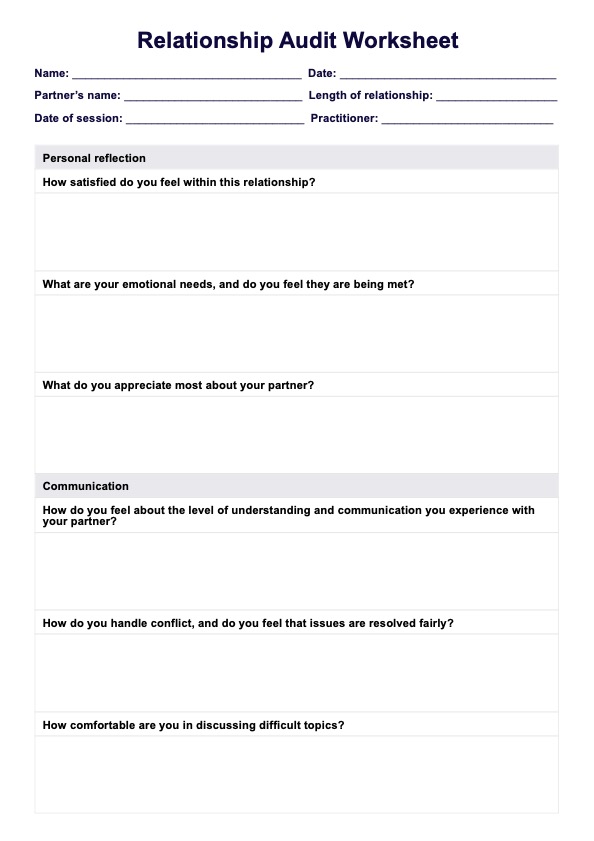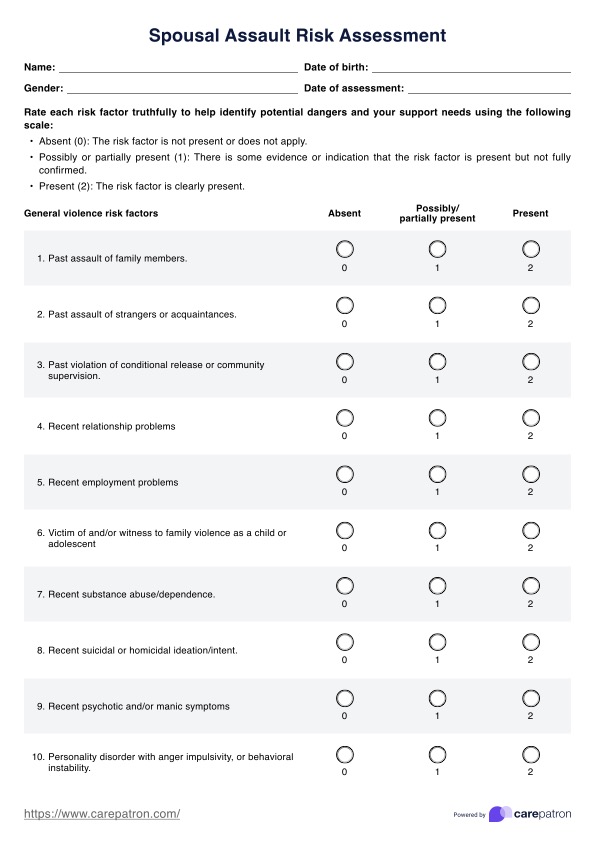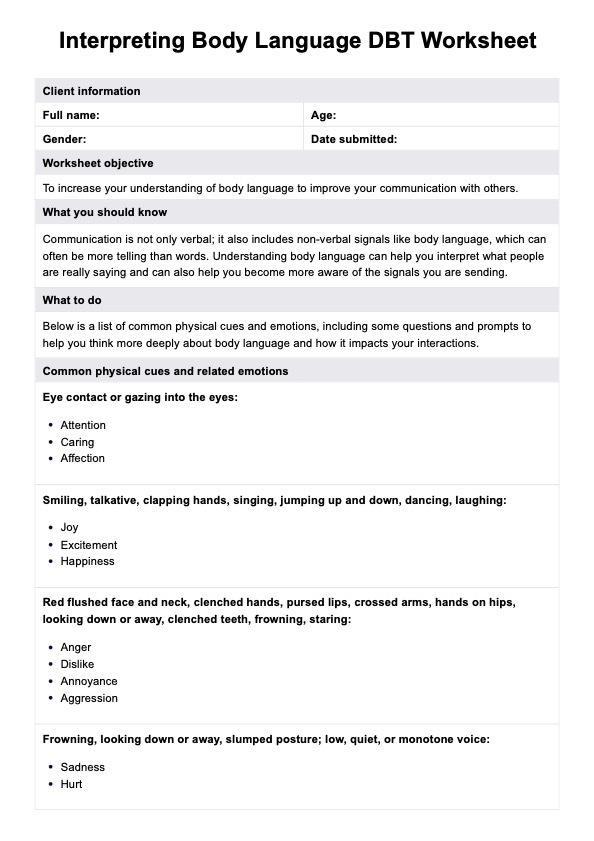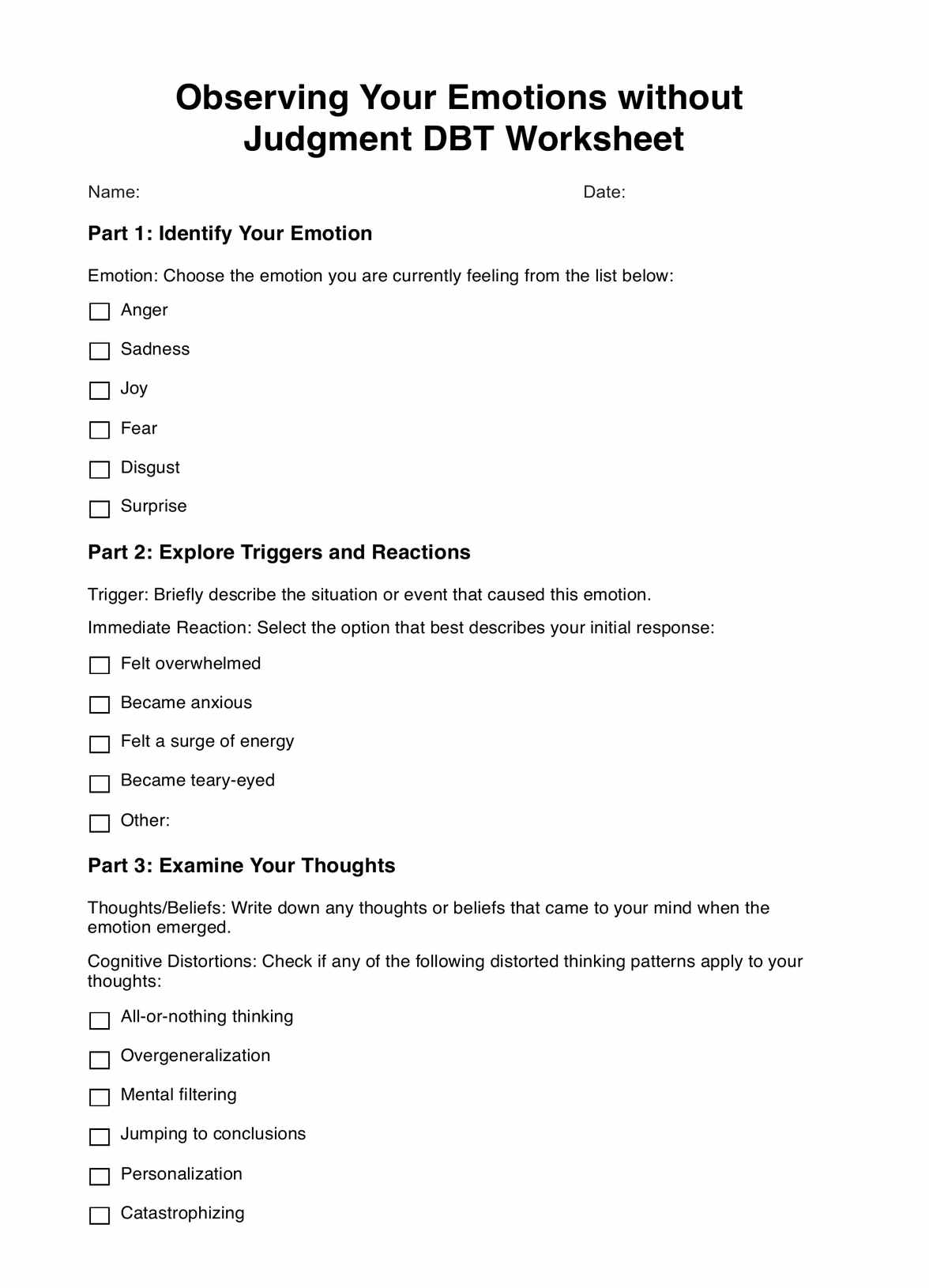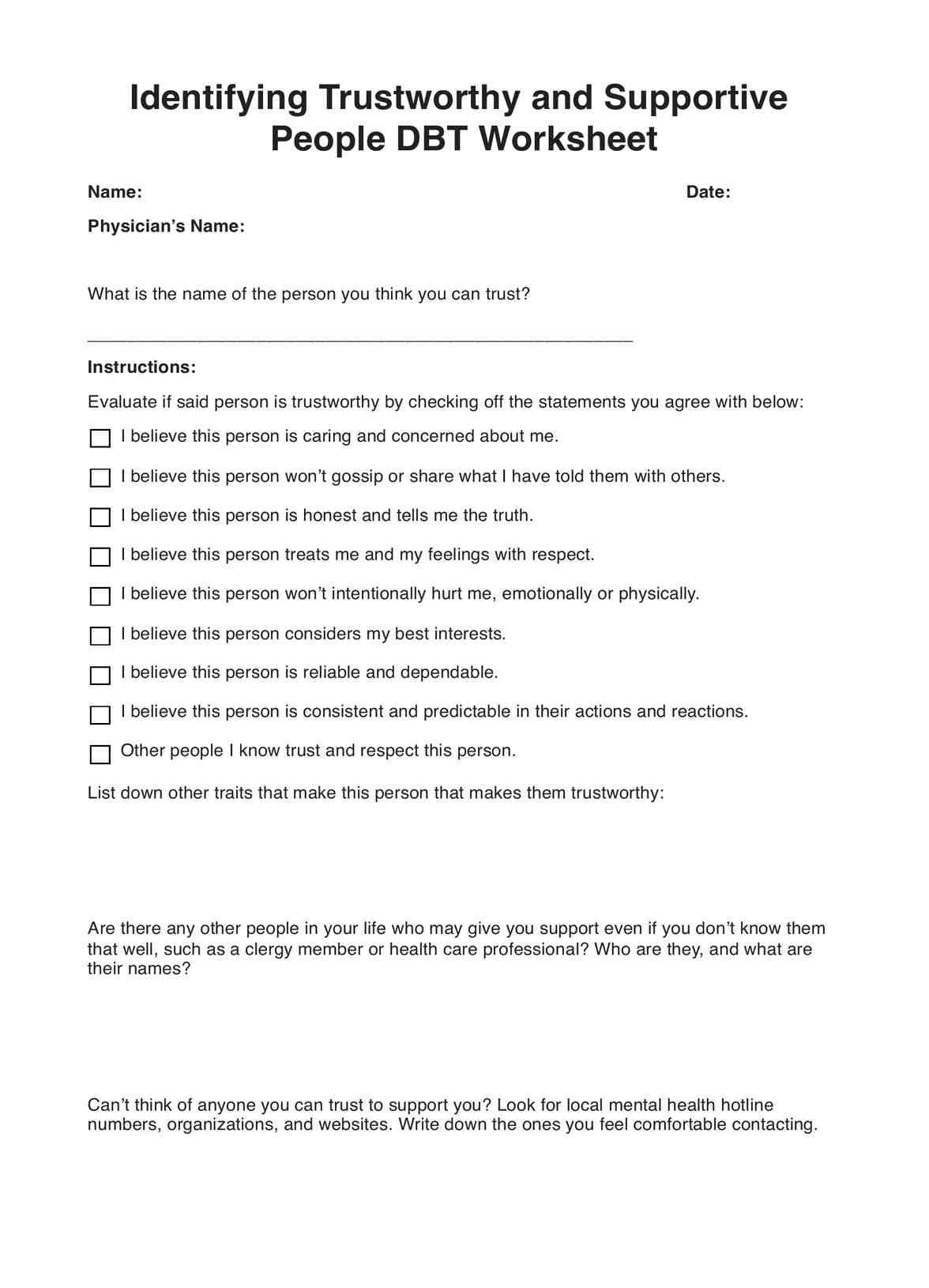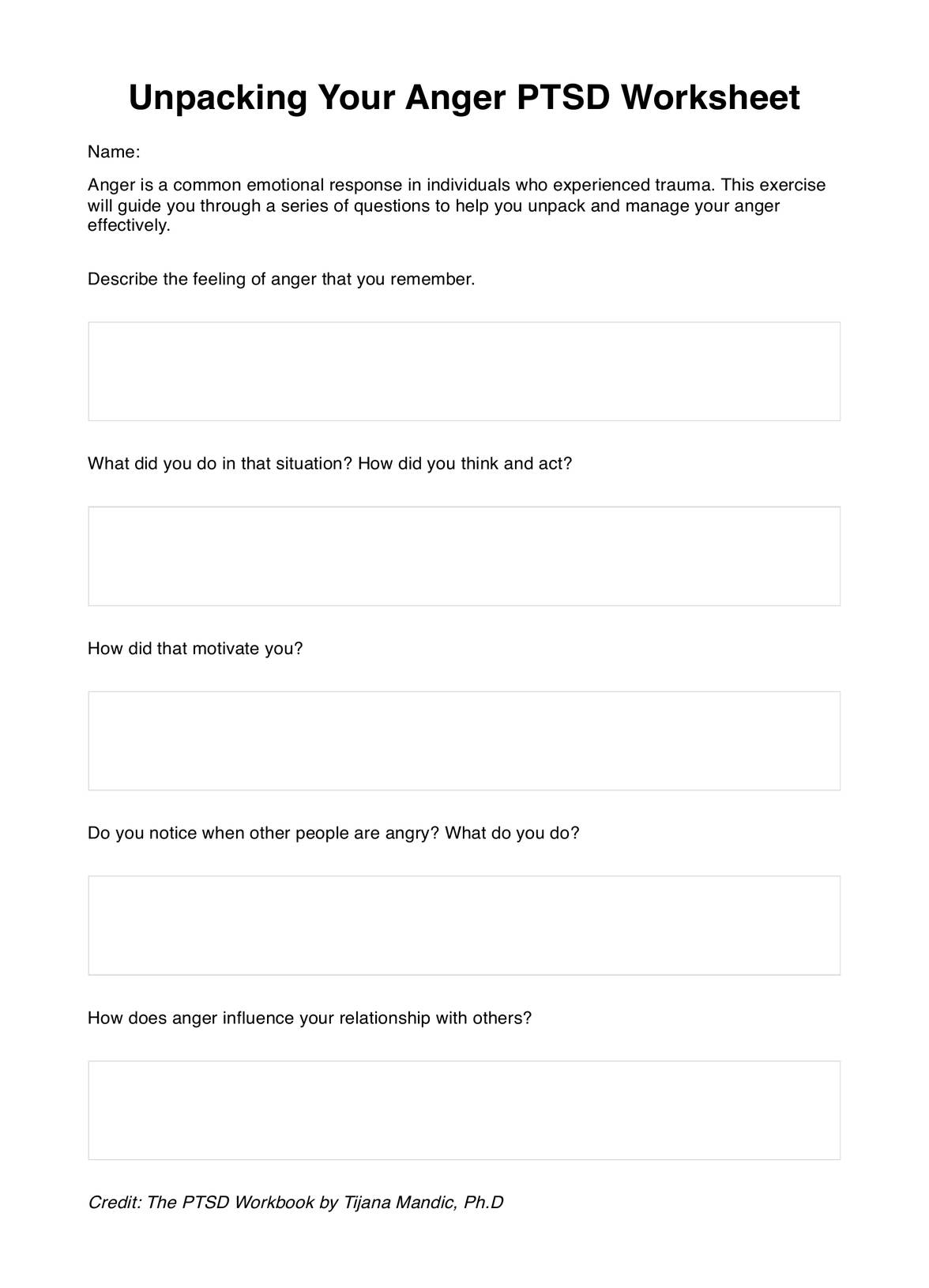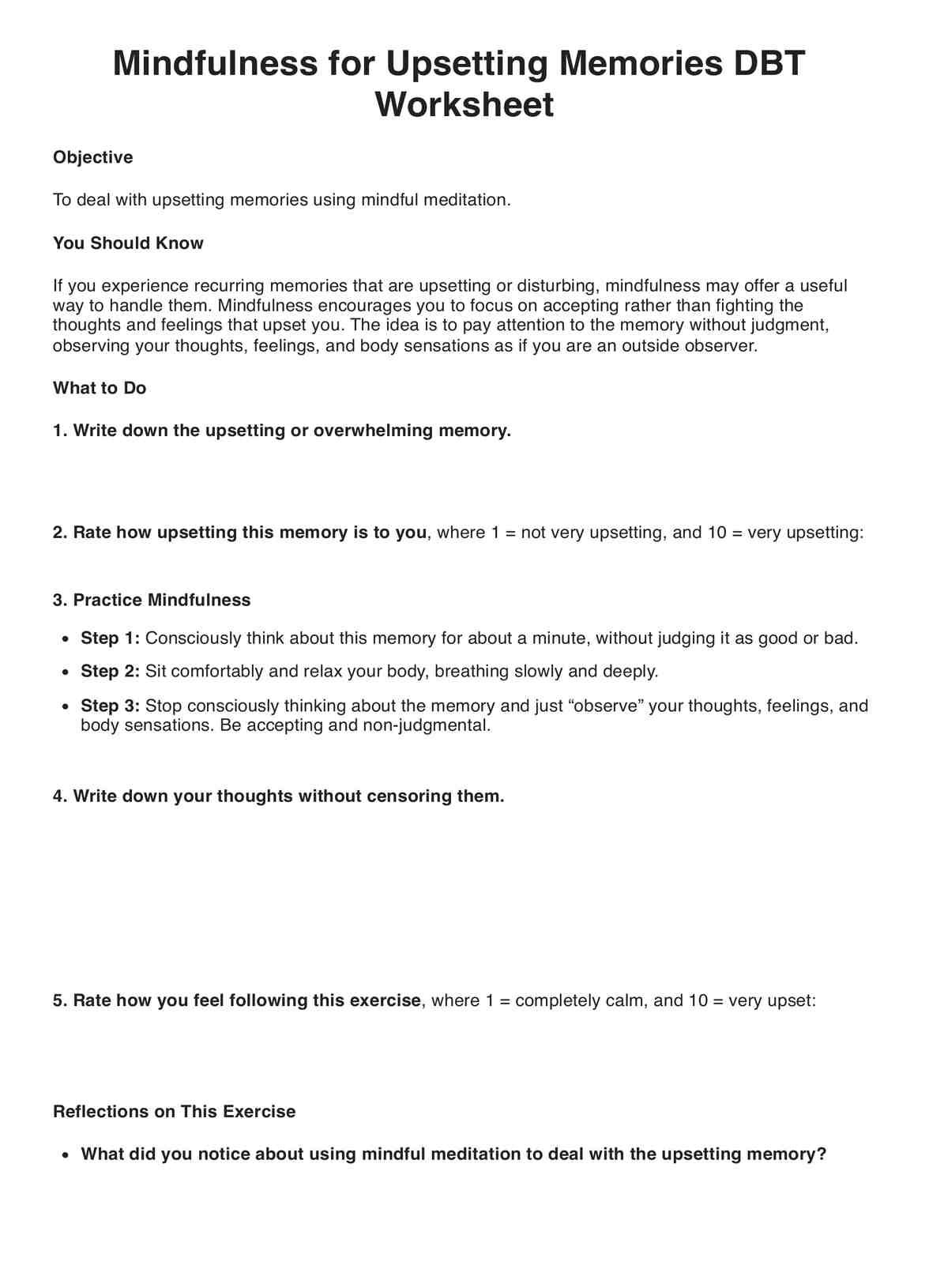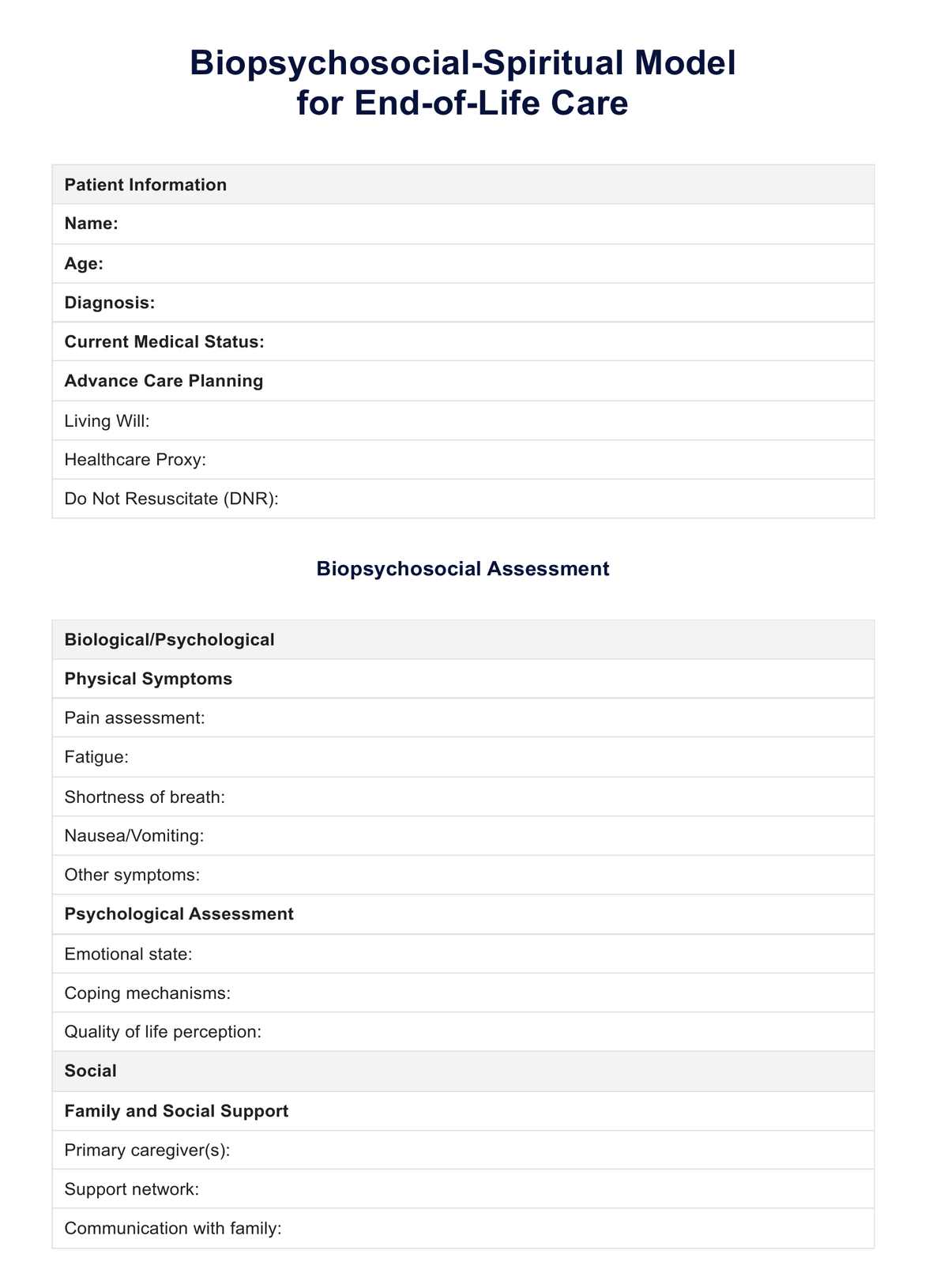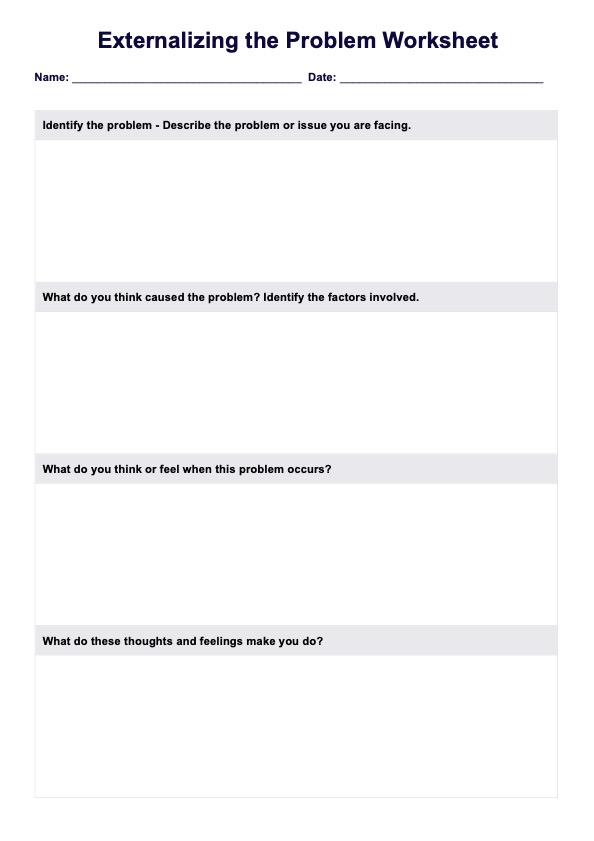Codependency Worksheets
Issue this codependency worksheet to your clients in order to help them combat codependency in their relationships!


What is a codependency worksheet?
Codependency is a behavioral condition that makes people pursue, form, or maintain one-sided relationships that are either/both emotionally draining and destructive, or abusive. Some indicators of a codependent relationship are:
- There is an obsession for a relationship on either side
- One or both people have the tendency to, consciously or unconsciously, control the other
- An unhealthy, sometimes desperate need for approval and acknowledgment
- Having no good sense of intimacy or boundaries
- Poor communication
- Lying and/or not being honest with what you’re feeling
were created to help people reflect on their relationships with others and identify the indicators of a codependent relationship they might have with a person. Some worksheets even encourage goal setting by having clients reflect on themselves and what they actually want to do in life, how they would feel by letting go of a codependent relationship, or how they would address their codependent relationship and see what they can do to make it not codependent.
Here, at Carepatron, we have an Avoiding Codependency Worksheet which does all of that!
Codependency Worksheets Template
Codependency Worksheets Example
How to use the Avoiding Codependency Worksheet
This particular codependency worksheet has numerous guide questions that a client must answer. This, ideally, should create the (emotional) distance needed for them to reflect on the codependent relationship(s) that they’re in, what they need to do in order for it to improve or stop, and what they want to do that would make them feel healthier emotionally and mentally.
Step 1: Identify the factors that make a client’s relationship with someone “codependent.”
The first thing the client needs to do is to answer the following questions:
- Are you in a codependent relationship with someone? With whom?
- Why do you think you’re in a codependent relationship with that person? Indicate the factors.
- Would you like to improve the relationship so that it stops becoming codependent, would you rather put it on hold, or end the relationship? Explain your (ideal) choice.
- Depending on your choice, what do you think you would feel in the coming days, weeks, months, or years?
This is a good way for the client to accept that, yes, they are in a codependent relationship.
Step 2: Identify your needs, what you like doing, and what you want to do.
Addressing your needs and focusing on your sense of self is important when working through a codependent relationship. So for this section, the client will answer questions meant to help remind them about what they love doing, what their goals are, and what they need to do in order to be better for themselves and for their partners/people they have codependent relationships with.
Here are the questions they need to answer:
- What do you like/did you like about yourself prior to your relationship becoming codependent?
- What are your interests and hobbies?
- What are your goals?
- Do you have a problem that’s hindering you from reaching your goals?
- What do you need to do to get past those problems?
- If you work through your problem, do you think your codependent relationship will transform into a healthier one that’s mutually good?
Once the therapist/counselor receives a completed worksheet from the client, the worksheet should serve well in helping the practitioner develop a plan to help the client work through their codependent relationship.
Who can use this printable codependency worksheet?
The following healthcare practitioners can use this printable codependency worksheet for their respective practices:
- Counselors
- (Mental health) therapists
- Psychologists
- Psychiatrists
While these can be integrated into their practices and treatment programs, the clients are the ones who are going to be engaging with this worksheet the most since they will be writing about their codependent relationships and what they need to do for themselves in order to work through them.
Why is this codependency worksheet useful for therapists?
It can help the therapist get to the bottom of their client’s codependent relationships.
Relationships are, generally, difficult to talk about, especially if they are problematic. They are highly personal subjects that people don’t necessarily want to talk about with others. Given this, it shouldn’t be surprising if a client doesn’t want to talk about their codependent relationships immediately.
This worksheet was designed to help nudge the client to talk about their experience, not through conversation but through writing. The worksheet will help frame things for them in order to, hopefully, look at themselves and the relationships they have with the necessary distance to properly identify problems.
Therapists can use these worksheets to develop actionable plans to help their clients.
Since this worksheet asks clients to write about themselves in detail, the information that they put on the worksheet should serve as a basis for the kind of plan they’re going to draw up for their clients to follow.
.png)
What are the benefits of using this codependency worksheet?
Clients using it will be able to examine themselves at the necessary distance needed.
Sometimes, clients might be in denial about themselves or the other people in their codependent relationships. But being in denial doesn’t mean they don’t know they’re in one. They might just be struggling to accept it.
This worksheet should help nudge them in the right direction, the first being identifying and accepting the problems they have with their codependent relationships.
It can help them set goals to make their lives and relationships better.
Aside from identifying the problem, the worksheet aims to remind the client what they like about themselves prior to their relationships becoming codependent, what they love doing, and what their goals are.
The worksheet also asks what they would like to do about their problems and how they want to deal with their codependent relationships. This, ideally, encourages them to set goals for themselves to work past their codependent relationships and the problems that stem from them.
Commonly asked questions
Codependency worksheets are nifty handouts that therapists/counselors issue to their clients seeking help to get past their codependent relationships as well as the problems rooted in those relationships. All they need to do is to think about themselves and write what they need to write based on the guide questions/prompts.
Therapists/counselors should issue the worksheets to their clients when the clients are ready to confront their codependent relationships. You may think they already are by the time they start setting up appointments with you, but that doesn’t necessarily mean they want to face their problems head-on.
The best time is when the clients themselves think they’re ready.
It depends on the person, but it shouldn’t be surprising if it’s difficult. The difficulty will come from the person writing on it. Codependency worksheets that have writing prompts, such as our Avoiding Codependency worksheet, ask people to reflect on themselves, and that might sometimes be uncomfortable to them at first. The therapist should give them the time and space needed to complete the worksheet. Urgency might add unnecessary pressure and stress to their clients, so having an agreement is always good.


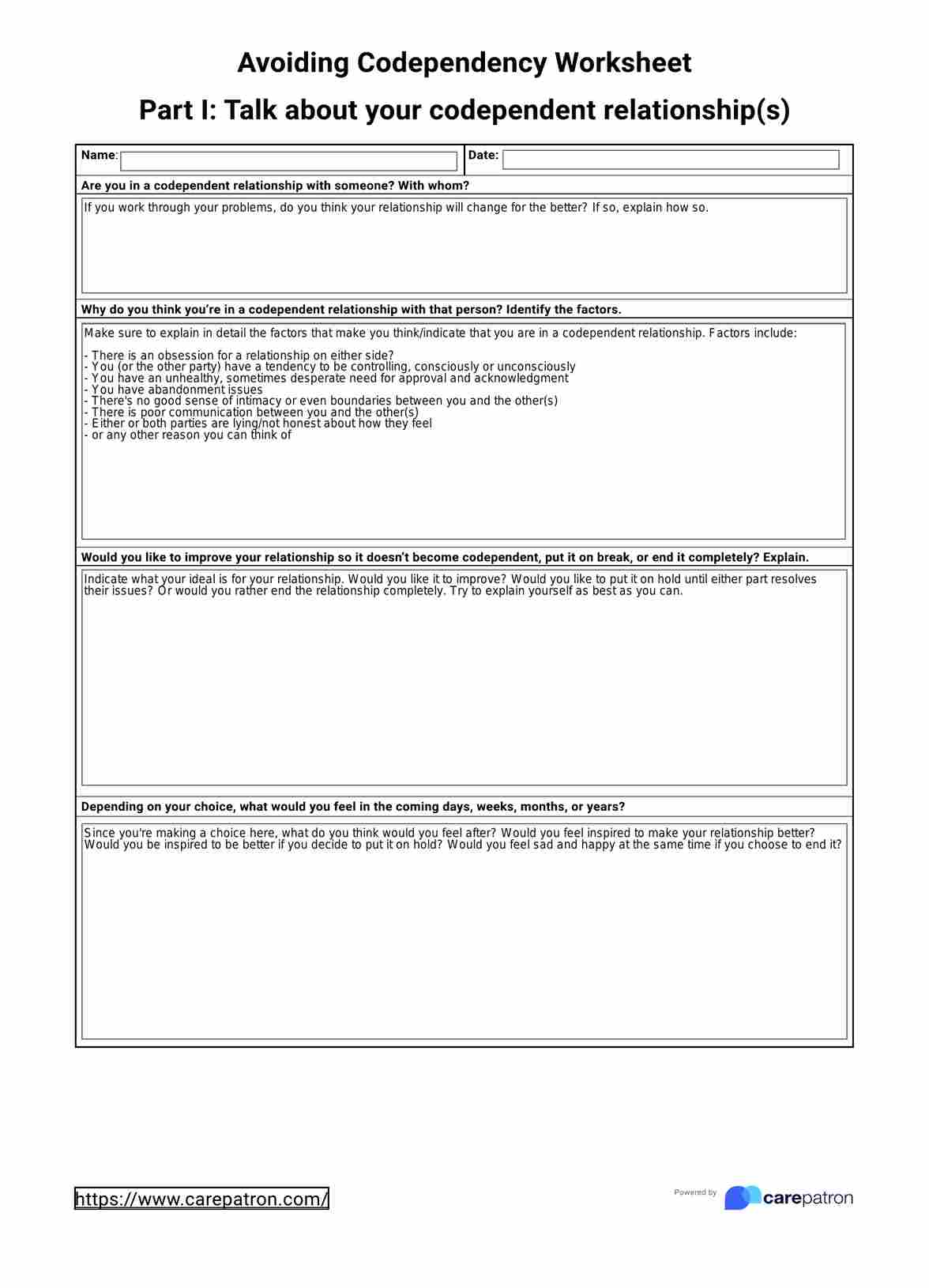
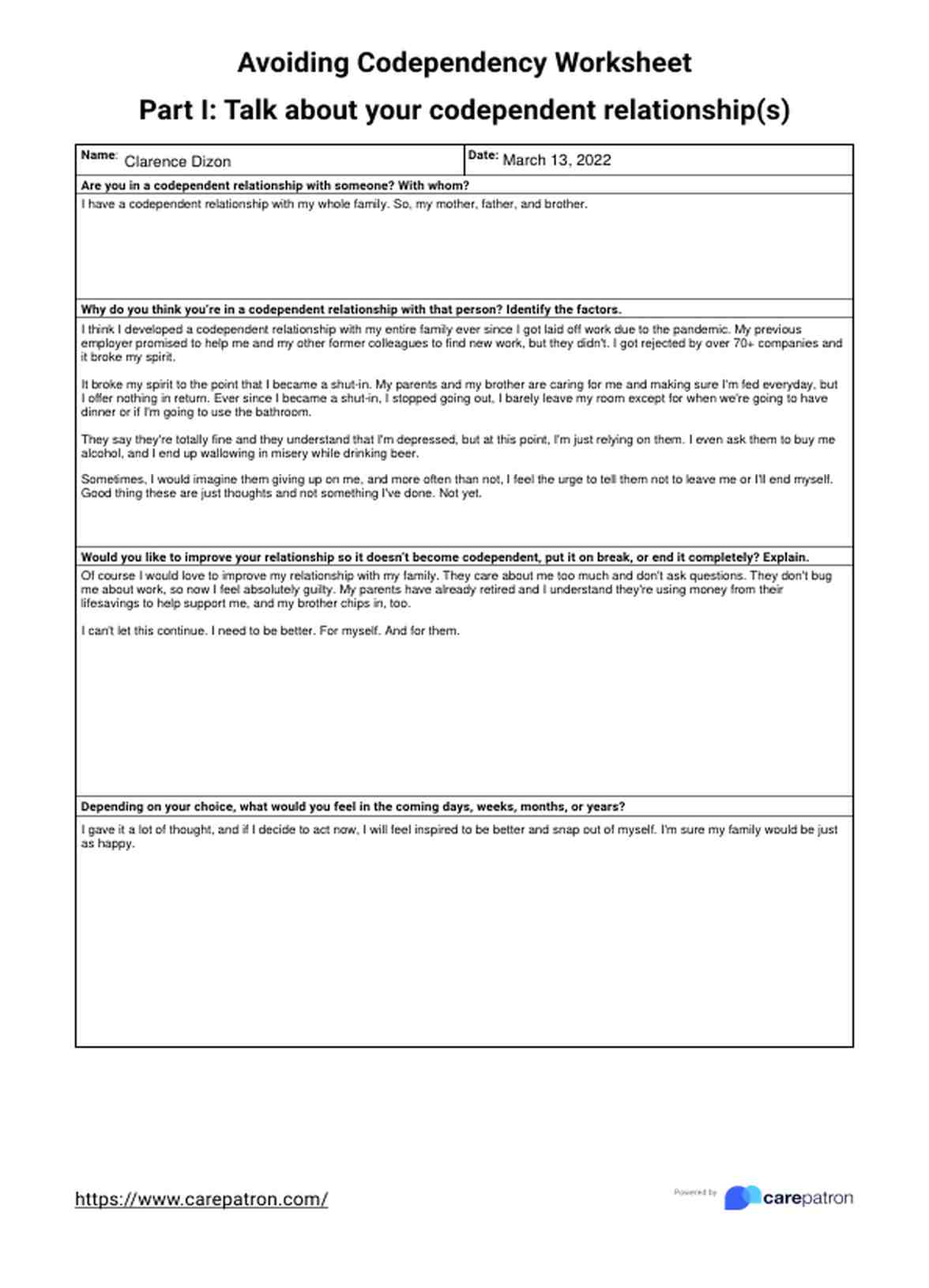

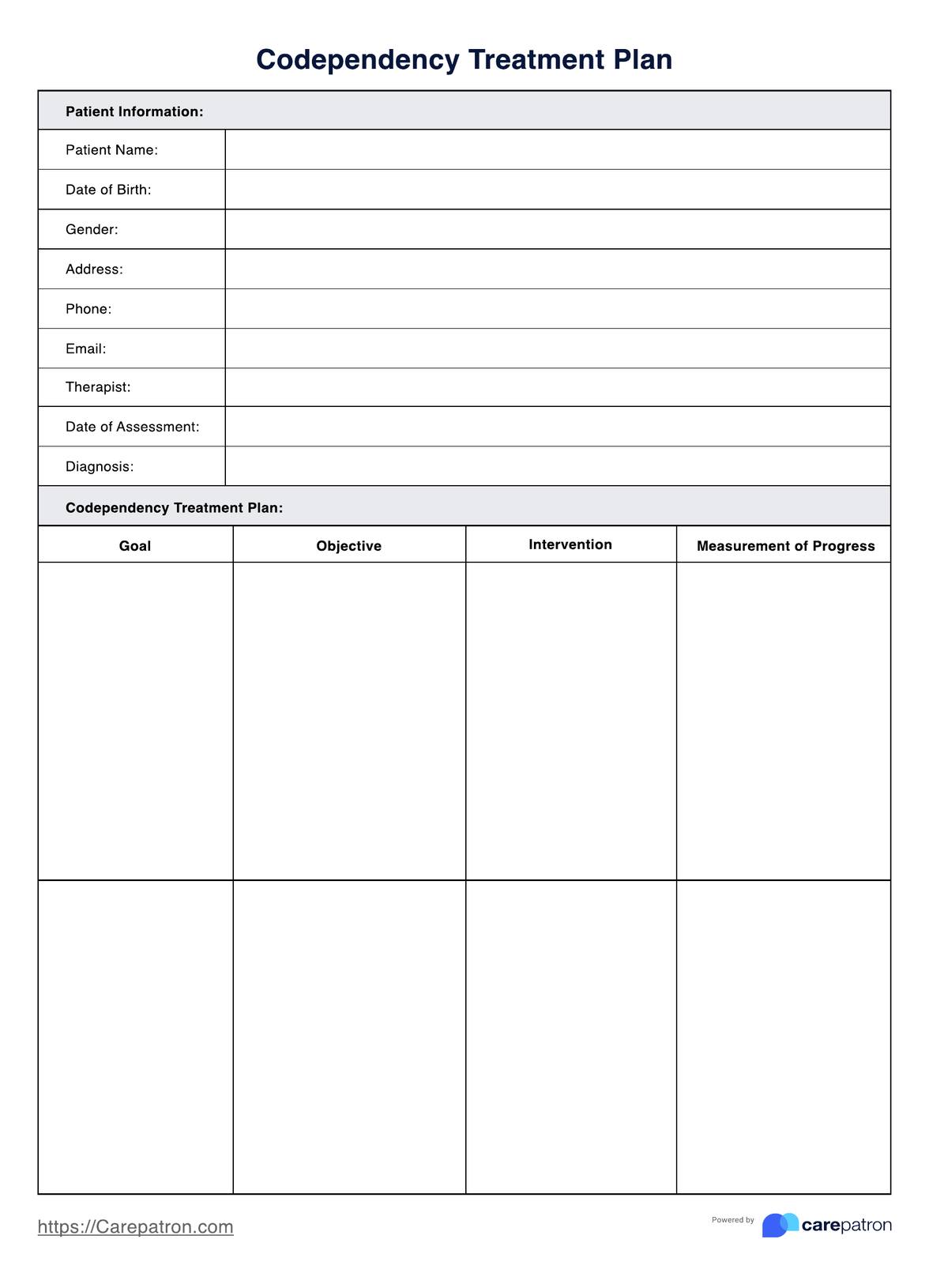
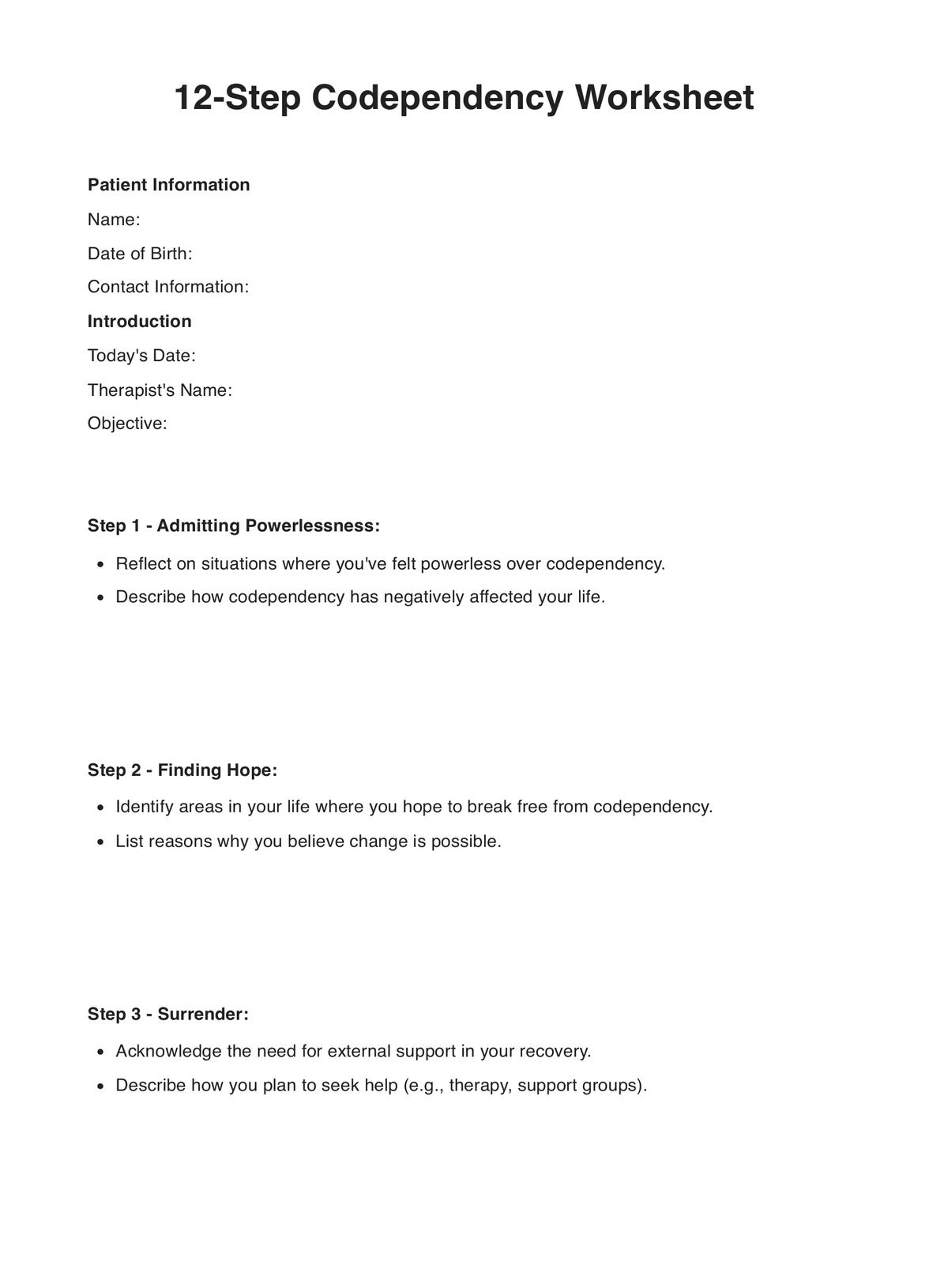
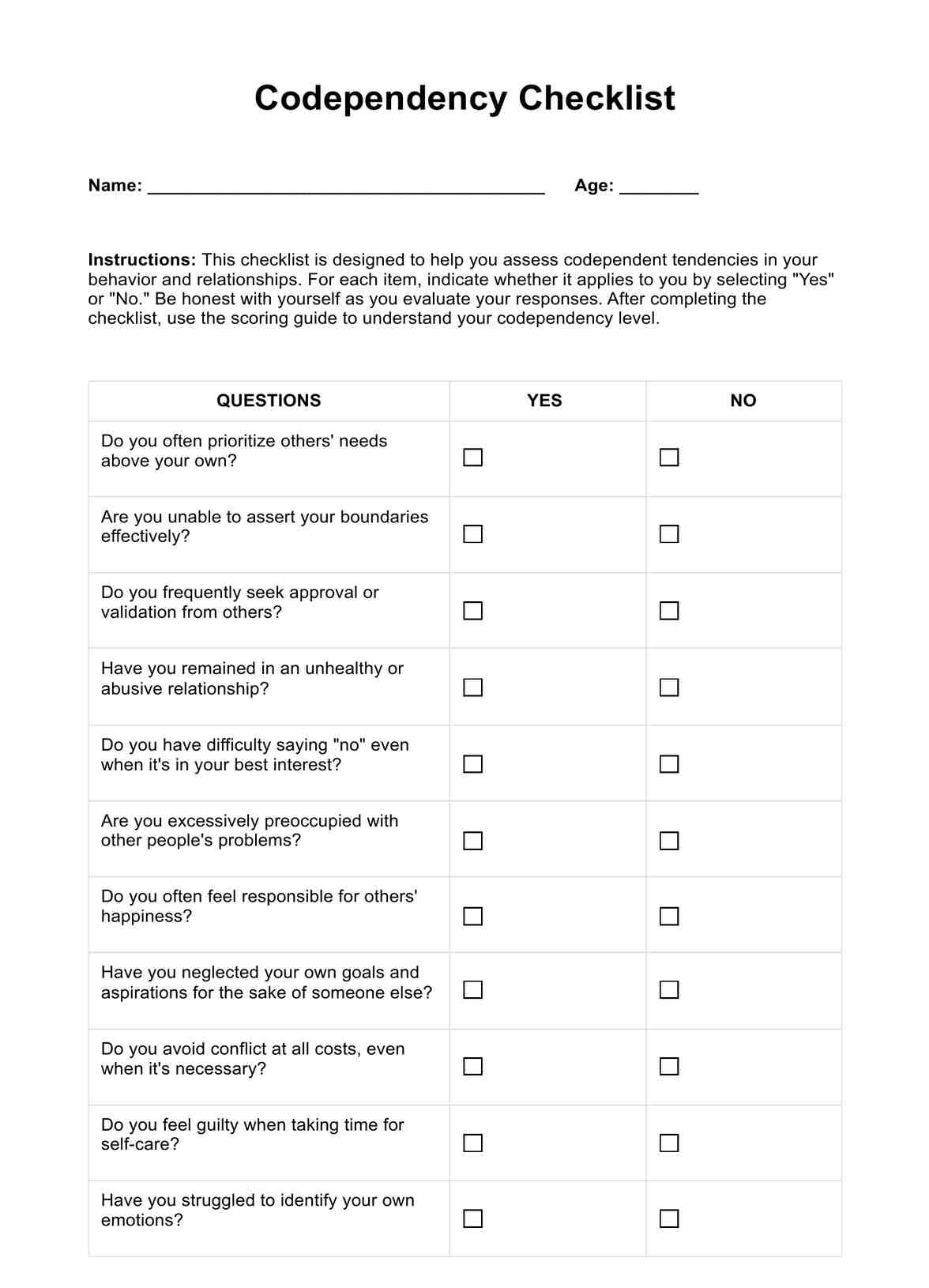














-template.jpg)


